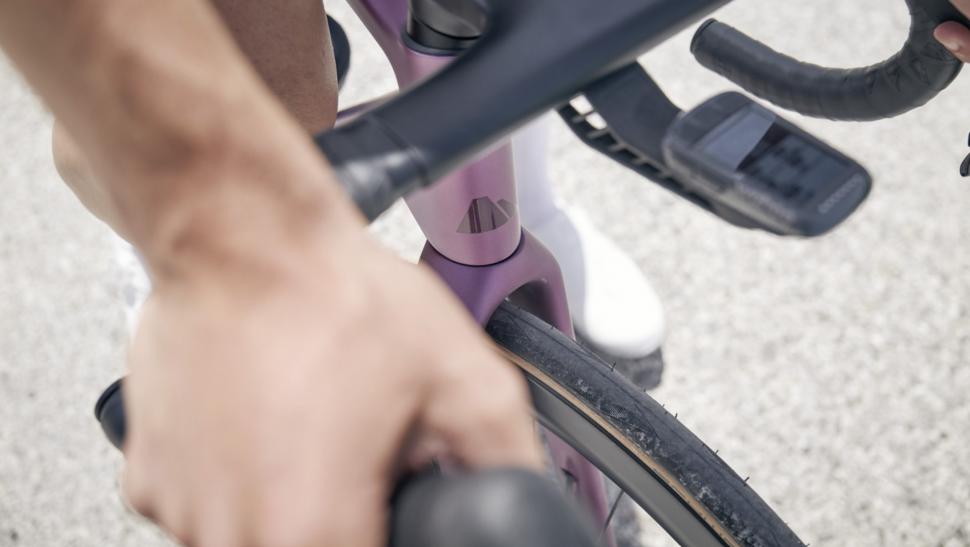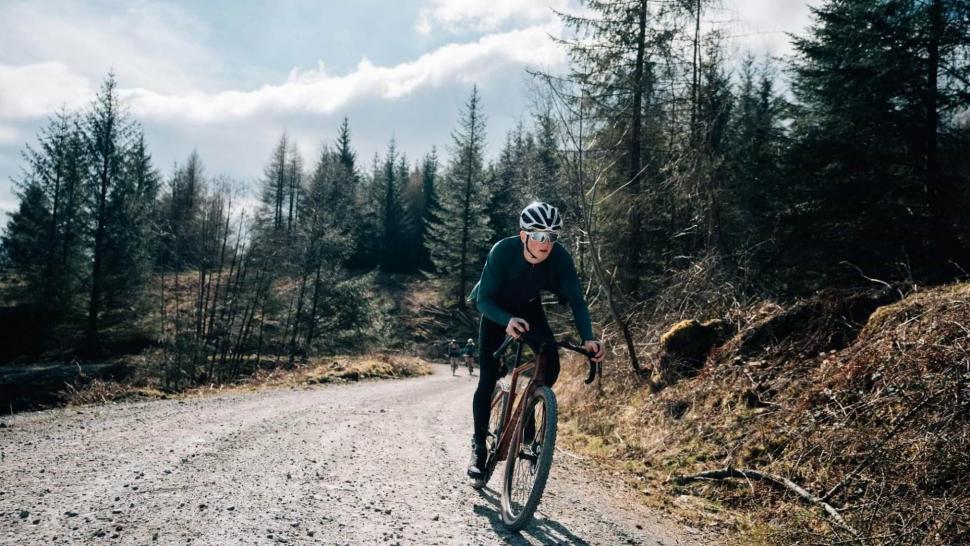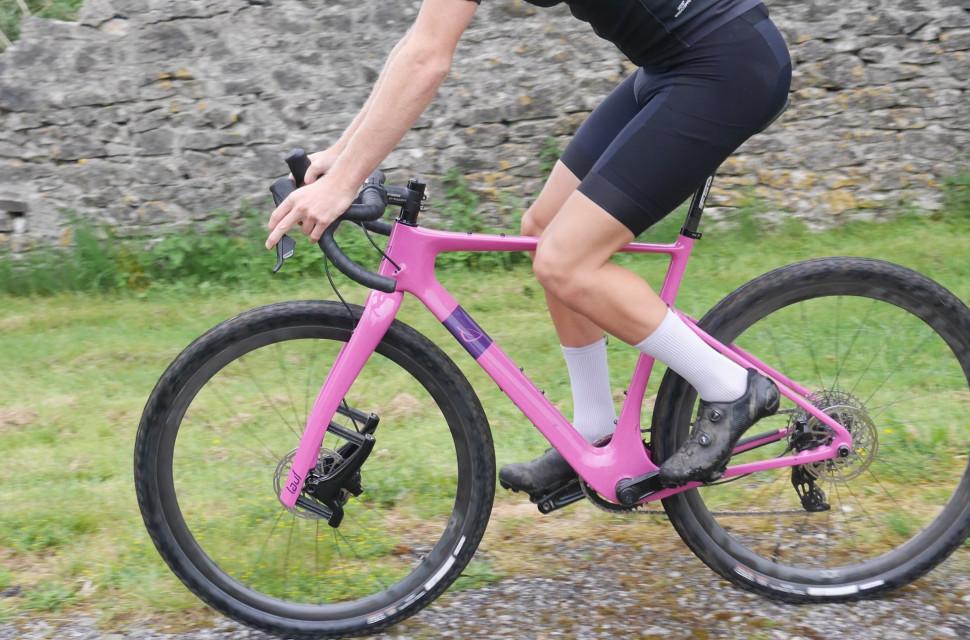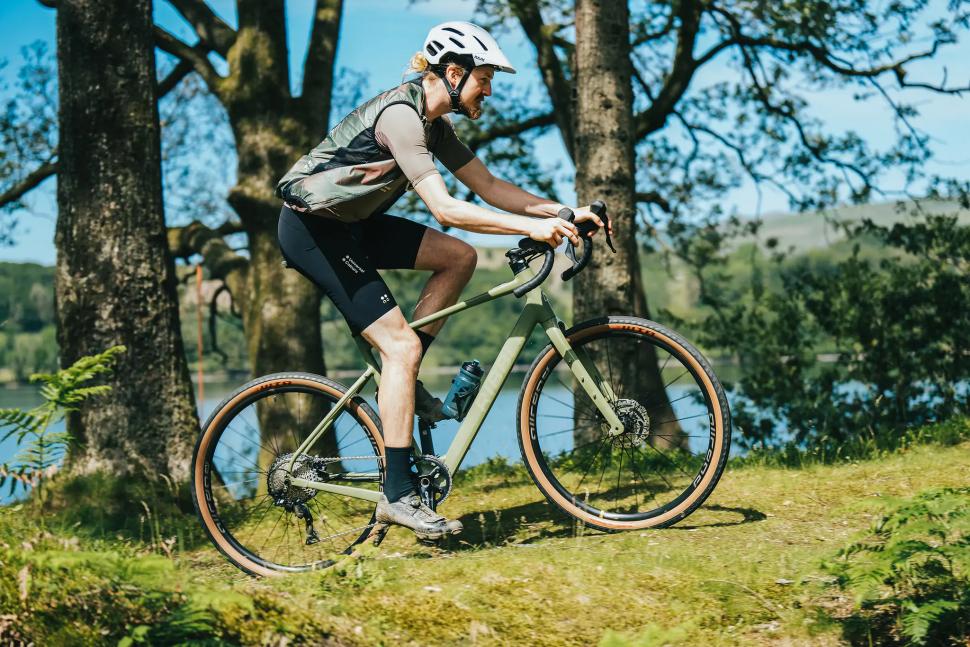- News
- Reviews
- Bikes
- Components
- Bar tape & grips
- Bottom brackets
- Brake & gear cables
- Brake & STI levers
- Brake pads & spares
- Brakes
- Cassettes & freewheels
- Chains
- Chainsets & chainrings
- Derailleurs - front
- Derailleurs - rear
- Forks
- Gear levers & shifters
- Groupsets
- Handlebars & extensions
- Headsets
- Hubs
- Inner tubes
- Pedals
- Quick releases & skewers
- Saddles
- Seatposts
- Stems
- Wheels
- Tyres
- Tubeless valves
- Accessories
- Accessories - misc
- Computer mounts
- Bags
- Bar ends
- Bike bags & cases
- Bottle cages
- Bottles
- Cameras
- Car racks
- Child seats
- Computers
- Glasses
- GPS units
- Helmets
- Lights - front
- Lights - rear
- Lights - sets
- Locks
- Mirrors
- Mudguards
- Racks
- Pumps & CO2 inflators
- Puncture kits
- Reflectives
- Smart watches
- Stands and racks
- Trailers
- Clothing
- Health, fitness and nutrition
- Tools and workshop
- Miscellaneous
- Buyers Guides
- Features
- Forum
- Recommends
- Podcast
feature
Gravel bikes — do we actually need them?
The gravel bike market is growing each year; but with the recent Gravel World Championships being won on a road bike, we decided to take a look at whether you actually need a gravel bike to take on the rough stuff...
A gravel bike might look a lot like a road bike, but as we soon found out, there are some key differences which make them suited to very different types of riding.
Tyre clearance
The first key difference is the tyre clearance. While a modern disc-brake road bike like the Canyon Ultimate CF SLX 8 has space for what roadies would call a very wide 30-33mm road tyre, these seem rather small when compared to the massive 57mm tyres that Jamie can fit in his Lauf.
> Multi-discipline stars dominate inaugural gravel world championships
Larger volume tyres are run at much lower pressures and are therefore better able to deform over lumps and bumps. The immediate benefit to this is comfort, with the larger tyre absorbing far more energy and preventing you from being bounced around in the saddle as much as on a road bike.
This also plays a large part when it comes to speed over 'chunky' gravel, whereas a 30mm or so tyre might be able to keep up on well-kept fire roads. As the surface gets rockier, wider tyres are required to keep up speed and prevent riders from having to carefully choose lines.
> Staff Bikes: Jamie's customised Lauf Seigla
As you get to a corner, you’ll find another benefit of the wider tyres, especially when you’re on a loose surface like gravel. The wider tyre offers a larger contact patch, and therefore has more to grip on to.
Geometry
The Canyon Ultimate is a road race bike and as such, the geometry is designed to tuck you down into an efficient aerodynamic riding position. It is best described as long and low with steep head and seat tube angles, keeping the handling fun and fast.
> Video: Top tips for better descending - How to become faster and safer going downhill
A gravel bike, meanwhile, is designed for stability, and therefore gets a slacker head tube and seat tube angle along with a longer wheelbase. This puts the rider further behind the bottom bracket, aiding traction on loose climbs and helping to prevent getting thrown over the bars on technical descents. Obviously there is a limit to how much the bike can do, though!
You'll often find that gravel bikes are a little higher at the front end. This more relaxed riding position is often more comfortable on long rides and has less of an impetus on aerodynamics as gravel riding is usually at lower speeds.
Toe overlap
And that leads us to one of the more dangerous aspects of a road bike on gravel. When trying to navigate a technical off-road climb, you often need to steer the bike quickly while pedalling. With their short wheelbases, road race bikes can suffer from a bit of toe overlap, which is where your toe strikes the front wheel. This doesn’t usually matter, as a road bike is rarely cornered at a slow-speed while pedalling.
> Review: Canyon Ultimate CF SLX 8 Di2 2023
A gravel bike, meanwhile, has a larger trail at the front wheel to eliminate any chance of toe overlap.
Gearing
A gravel bike has a clear gearing difference compared to a road bike. Jamie’s Lauf uses a 1x setup with a wide-range cassette at the back. The Canyon, meanwhile, has a 2x chainring setup and a much closer cassette.
1x drivetrains are generally better in muddy conditions and allow for wider tyres to be used. A 2x setup reduces the jumps between gears, allowing road riders to maintain a more constant cadence at road riding speeds.
Mounting points
Jamie’s gravel bike is at the less adventurous end of the market, but even so, it still has more mounts than most road race bikes.
It features both a bottom bracket and top-tube mounting point to accompany the standard bottle cage mounts. Some gravel bikes can be adorned with more mounting points than you could shake a muddy stick at, and riders will often bolt all sorts of carriers and bags onto their bikes as they go off on multi-day adventures.
The Canyon, meanwhile, just has the standard bottle cage mounts. That's two in the main frame triangle, which is great for when you're being followed by a team car but not so great for getting lost in the wilderness with...
Safety
Each and every bike is, no matter the brand, tested for its specific purpose. In the case of a road bike, this normally means drops of around kerb height. This becomes a problem if taking it on gravel, as you could well come across terrain that requires you to ride off larger drops.
When this happens neither the bike manufacturer nor us, for that matter can guarantee that it won't break your bike, a typical gravel bike is therefore usually rated for larger drops and impacts.
Summary
These differences don’t necessarily stop a road bike from being ridden on gravel surfaces, but a road bike will be limited to well-graded and fine gravel due to the smaller tyre volume unless you, the rider, are very skilful.
A gravel bike’s larger tyres open it up to rougher terrain and the slacker geometry with reduced toe overlap. This makes it better for tight turns and technical climbs where the bike is being steered at slow speeds.
To answer the question of whether you need a gravel bike, you have to ask yourself where you’d be riding it as the terrain is the deciding factor, but for fine, well-graded gravel, you can get away with riding a road bike.
It's worth noting that if you're looking for one 'do-it-all' bike and like the idea of heading off-road, then it's probably a better idea to get a gravel bike. You can always put slick tyres on it!
Have you considered taking a road bike off-road? Let us know in the comments section below...
Latest Comments
- Secret_squirrel 1 hour 47 min ago
Um...no. Spitting is grim and there is never any excuse.
- Another_MAMIL 4 hours 43 min ago
Q36.5 Gregarius Essential Bib Knickers fit the bill: 3/4 length bib tights for warm weather.
- Rendel Harris 4 hours 54 min ago
Jolly good. Only it hasn't been and it is still a public bridleway. Feel free to look it up.
- jaymack 5 hours 44 min ago
"...it feels more like a £100+ jersey". It's almost as if cycling apparel is over priced.
- mike the bike 6 hours 56 min ago
I've had a few Lezyne bits and bobs over the years and while it's true I've never bothered to return anything under warranty, I've had a couple of...
- mark1a 5 hours 59 min ago
There's a transition period. For the benefit in kind (BIK) tax to the employee, it will be treated as a goods vehicle as it is now (rather than a...
- hawkinspeter 7 hours 8 min ago
Parents say East Bristol Liveable Neighbourhood makes roads '100 times safer' for children:...
- mdavidford 7 hours 14 min ago
Isn't basically all carbon recycled? From stars?
- velodinho 8 hours 30 min ago
As witnessed at so many infrastructure improvement projects similar to this one, all those who object should ignore the consultation and pray at...
- Nagai74 10 hours 18 min ago
It's a DLO to those in the trade.








Add new comment
26 comments
Lordy.
I have not got the foggiest idea what mine is, then.
It's a Boardman Team hybrid, with 35mm Schwalbe Supreme semi-slicks, and a touring triple which gives me a ludicrous range of gears from about 18in to 118in.
The only thing that is not up to scratch is Supreme tyres on mud. Apart from that it goes nearly anywhere and does nearly anything, apart from tricks at which I am beneath useless.
Gravel bikes seem to be picking up the slot between cyclocross and 19ers. I think.
I had to choose a gravel or road frame this week and I went road in the end. I just couldn't see why you'd have gravel over a hard tail if I'm honest. The geo is not a MTB and it's not road so doesn't do either that well. A bikes a bike at the end of the day and I'm sure they are brilliant but for me I couldn't justify it. I think what probably pushed me away from them is that rearward bias a few years ago I had the latest and greatest thing we used to call a 'sportive' bike it was comfortable but extremely dull and gravel just feels like sportive+ to me. Really need to try one to make an informed decision I think.
A gravel bike, meanwhile, has a larger trail at the front wheel to eliminate any chance of toe overlap.
Toe overlap is a function of front centres, the distance from bottom bracket to front wheel hub. (Obviously wheel size and mudguards are factors too.) More trail can increase this distance, if it's achieved by a slacker fork angle – but for two bikes with the same steering angle and wheel size but different trail, the one with higher trail can only achieve this by have less fork offset (so the hub is offset less from the steerer angle) and therefore "larger trail" can actually cause or increase toe overlap.
If road.cc were just a bunch of mates chatting bikes or a column in the local rag, this would be a quibble not worth stating, but from a professional cycle journalist we deserve accuracy. Or even just correctness.
It feels to me like gravel bikes are heading towards 'second road bike' territory. I think a lot of buyers are interested in something comfortable that can take big tyres so gravel is an option, but because gravels so occasional for most of us, the balance with a frame that can also accommodate road wheels with a slacker geometry for long days in the saddle is attractive. Giant Revolt is a good example. Sort of a slack Defy, loads of clearance but wouldn't look silly with a set of 50mm carbons and GP5000s.
I have a gravel bike and a hardtail MTB with fast MTB tyres. The MTB can do everything the gravel bike can do with far more control and comfort. Drop bars are no good on sketchy descents. You might trade a couple of average mph on a ride but you'll have way more fun and be more comfortable on an MTB. Also the gearing on the MTB is far more suited to bike packing unless you're super fit.
Gearing is what you put on it. Quite agree that 31/36 is not low enough to deal with severe riding, but a lot of 1 x 12 riders will have much lower and have easier options for switching front ring depending on conditions.
A couple of mph average is no big deal in terms of stats, but represents quite a bit difference in effort. Gravel bikes are much lighter and that mph difference represents physical effort.
I agree that MTB is more comfortable but it is a trade off and not all will agree on the balance
If you need front suspension, the conditions are too 'technical' for a gravel bike..
I think that is the difference, if you are riding technically, jumps and bumps, then that's MTBing, getting around off road keeping the wheels on the ground generally doesn't "need" suspension. Which bike is best may well depend on the mix, the cost of lugging a MTB around may outweigh the benefits, on the other hand there may be stuff on a route that a MTB can ride where a gravel rider might dismount for. Is dismounting a problem?
I swapped from MTB to gravel and the difference in climbing is fantastic. Quite a bit lighter and no squashy front, even with the front sus locked. With a lighter front it is also easier to pop the front wheel over a big root, step etc
Dismounting is no problem for maybe a rock step or rock garden however I've done some "gravel" events that had properly technical descents where you were basically on the brakes for a good few minutes. So I switched to a hardtail for those events and found them far more enjoyable. Just to be clear I'm not interested in setting a great Strava time just want to enjoy a ride over some mixed terrain.
And yet bike companies are building gravel forks and even fully suspended gravel bikes. So ok some of that is marketing to just get people to buy more stuff but I've also seen some gravel bikes at events where the owners are basically trying to replicate an MTB. I.e. 50 tooth rings out back with massively wide drop bars to keep some control on descents, even dropper posts. Absolutely agree that if all you ride are fire roads and tarmac, or you want to set a time in a course, then yes a gravel bike will be perfect. However, in my opinion and experience, a hardtail MTB will also work just fine for most riders and they'll have more fun and control when the going gets rough.
So they've recreated the drop bar MTB as used in the 1980s by eg Jacquie Phelan. Now it's called a gravel bike because, well, because segmentation sells. Look at the mountain bike, which used to be just a mountain bike, but now encompasses half a dozen sub-genres from downhill to trials. "Gravel" already covers a wide range, from nearly MTB to nearly cyclocross to nearly road touring, and has thrown up a number of sub-category names, such as "all road" and "adventure" but they don't seem to have yet crystallized into recognised categories.
John Tomac's legendary use of drop bars for a downhill MTB race is worth a read.
https://roadbikeaction.com/throwback-thursday-drop-bars-on-the-kamikaze/
I've a better question - do you even need a road bike? Given most British roads, a gravel bike is probably the better tool - although I have never been much of a fan of road riding anyway
This.
After a year on a Strael "All Road" I sold my 3 bikes - Ribble Carbon Endurance, the Strael, and MTB for a Ti Framed Gravel bike with all the DI2 trimmings and 2 sets of wheels.
1x650b with Dynamo and 45mm tyres for Winter, Gravel and light MTB.
1x700c 48mm deep aero set for long roads and high summers
Now I'm always riding my best bike.
<pedantry> These are all road bikes, the distiction is metalled or unmetalled. </pedantry>
My 'road' bike is a gravel bike. I've got nice wide tyres and the more relaxed riding position suits my old man riding style. It's perfect for the very dodgy Norfolk lanes and if I want to go along a forest trail - it can cope quite easily. For people of my level - I reckon more people should use gravel bikes for their day to day riding rather than a hard core road bike..
My good-bike is gravel with 40mm tyres. I ride with my road friends (lots of chat) and off road with others. I love that it is a go anywhere machine certainly in Suffolk. The only think I change are the tyre pressures. When fitted with 2.3" tyres it is good for ridgeway or Dorset Dirt Dash.
absolutely, I think people mistake gravel bikes as somekind of MTB-lite offshoot, which is why they spend all their time trying to turn them into hard tail MTBs, when thats never been the point of them.
my gravel bike allows me to ride roads comfortably, the back roads which a road bike would take an absolute hammering on, and allows me to use bridle ways, woodland tracks that youd never remotely consider on a road bike.
but none of that requires an MTB, MTB suspension or even MTB tyres, infact an MTB would be horrendously slow in comparison.
Same here - my winter / wet weather / commute bike is a gravel bike but very much at the road end of the spectrum. 38 mm slicks, mudguards and 2x11 with easiest gear 34x32, so not even 1-1 and hence a bit wrong for gravel. It's probably most optimised for the commute due to the awful road surfaces, but does most miles on club rides. The only slight drawback compared to my summer bike is climbing needs more effort..
I would like to do more gravelly gravel, but removing the mudguards and changing tyres is a faff, and if I went all-in, I'd want a lower gear, so new cassette on spare wheels and possibly wrong chain length. Next cassette will be 34t at least.
Same here. Not many (any) "gravel" roads or "fire tracks" round here. I was looking for a bike that wasn't a "racing" bike for use on quiet roads and occasional tracks. I used to have what they called a touring bike, but they seemed to be thin on the ground, and eventually it dawned on me that "gravel" was exactly what I wanted. Took me a while to understand why they were called gravel!
For off-road riding, tyre width is crucial. The lumpier the terrain, the wider the tyre required to ride it. It's worth noting that modern road bikes have tyre clearances that even a decade ago would have seemed ludicrously wide so it's hard to draw a clear distinction between road and gravel as there is now such a specrum of bike capability. Where there still is a clear distinction, I think, is in the riders and their mentality. I'm in quite a big cycling club and a lot of the people are very much road-only. If you've been riding road for years, it's a leap of faith to start riding on unmade surfaces. It's totally worth it though! Much fun to be unlocked.
I rarely ride off road (mostly MTB when visting my Dad) and the thing that I really noticed was that on the road if the bike is sliding around it is likely to get very "interesting" very soon, whereas off road a bit of sliding around is the default.
That exact thing freaked me out when I started on gravel a few years ago. Have got used to it now.
I'd quibble with that slightly. Width is good but tubeless is a revelation due to the lower pressures you can run.
Or "roads" as they're known as around here.